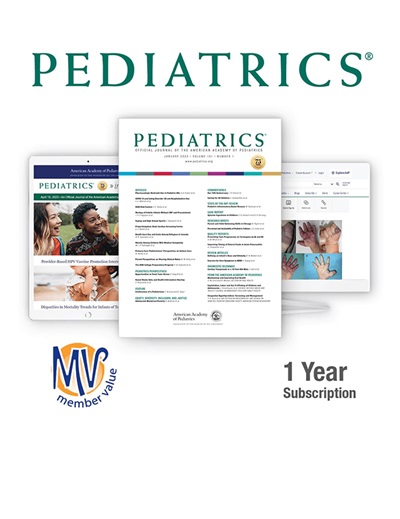Challenges and Opportunities in Transitioning Autistic Individuals Into Adulthood.
IF 6.2
2区 医学
Q1 PEDIATRICS
引用次数: 0
Abstract
BACKGROUND AND OBJECTIVES Approximately 1.2 million autistic youth will reach the legal age of adulthood over the next decade. Given dynamic changes in the socioecological context of the transition to adulthood, we produced an updated transitions research agenda reflecting the perspectives of autistic young adults, care partners (parents), and professionals who use autism research. METHODS We conducted 9 focus groups: 4 young adult, 4 care partner, and 1 professional, with 59 total participants. Young adults were grouped by self-reported identity: (1) racial and ethnic minority, (2) lesbian, gay, bisexual, transgender, queer, intersex, asexual, and other identities, and (3) nonspeaking, in addition to a general group. We selected care partners who supported youth with varying intensity of support needs. We used rapid qualitative inquiry methods to extract key points from answers to semistructured interview questions. RESULTS Delays in diagnosis and transition processes, and placement on wait lists resulted in significant obstacles to successful transitions. Parents assumed a dominant role by coordinating services, navigating systems and identifying opportunities for community participation, and providing direct supports. There was an overarching need for inclusion of autistic people in transitions research and consideration of cultural differences in priorities and values. Participants prioritized investigation of variation in transitions among autistic youth with intersecting identities, navigation support (eg, peer mentors), efficacy of services and supports (eg, transition and employment services), differences in available services by location, and problems within specific benefits programs. CONCLUSIONS Research should focus on understanding population-level factors of system performance on outcomes and support needs, service delivery among marginalized groups, and transformation of complex service ecosystems.自闭症患者向成年过渡的挑战与机遇。
背景与目标在未来十年中,约有 120 万自闭症青少年将达到法定成年年龄。鉴于向成年过渡的社会生态环境的动态变化,我们制定了一个最新的过渡研究议程,反映了自闭症青少年、照料伙伴(父母)和从事自闭症研究的专业人士的观点。方法我们开展了 9 个焦点小组:4 个青少年小组、4 个照料伙伴小组和 1 个专业人士小组,共有 59 人参加。除一般群体外,我们还根据青少年的自我报告身份对他们进行了分组:(1) 少数种族和少数族裔;(2) 女同性恋、男同性恋、双性恋、变性者、同性恋者、双性者、无性恋者和其他身份;(3) 不说话群体。我们选择了支持青少年的护理合作伙伴,他们的支持需求强度各不相同。我们采用了快速定性调查方法,从对半结构化访谈问题的回答中提取要点。结果诊断和过渡过程中的延误以及被列入等待名单导致了成功过渡的重大障碍。家长通过协调服务、驾驭系统、确定社区参与机会以及提供直接支持,发挥了主导作用。最重要的是,需要将自闭症患者纳入过渡研究,并考虑优先事项和价值观方面的文化差异。与会者优先考虑调查具有交叉身份的自闭症青少年在过渡方面的差异、导航支持(如同伴导师)、服务和支持的有效性(如过渡和就业服务)、不同地点可用服务的差异以及特定福利计划中的问题。
本文章由计算机程序翻译,如有差异,请以英文原文为准。
求助全文
约1分钟内获得全文
求助全文
来源期刊

Pediatrics
医学-小儿科
CiteScore
12.80
自引率
5.00%
发文量
791
审稿时长
2-3 weeks
期刊介绍:
The Pediatrics® journal is the official flagship journal of the American Academy of Pediatrics (AAP). It is widely cited in the field of pediatric medicine and is recognized as the leading journal in the field.
The journal publishes original research and evidence-based articles, which provide authoritative information to help readers stay up-to-date with the latest developments in pediatric medicine. The content is peer-reviewed and undergoes rigorous evaluation to ensure its quality and reliability.
Pediatrics also serves as a valuable resource for conducting new research studies and supporting education and training activities in the field of pediatrics. It aims to enhance the quality of pediatric outpatient and inpatient care by disseminating valuable knowledge and insights.
As of 2023, Pediatrics has an impressive Journal Impact Factor (IF) Score of 8.0. The IF is a measure of a journal's influence and importance in the scientific community, with higher scores indicating a greater impact. This score reflects the significance and reach of the research published in Pediatrics, further establishing its prominence in the field of pediatric medicine.
 求助内容:
求助内容: 应助结果提醒方式:
应助结果提醒方式:


